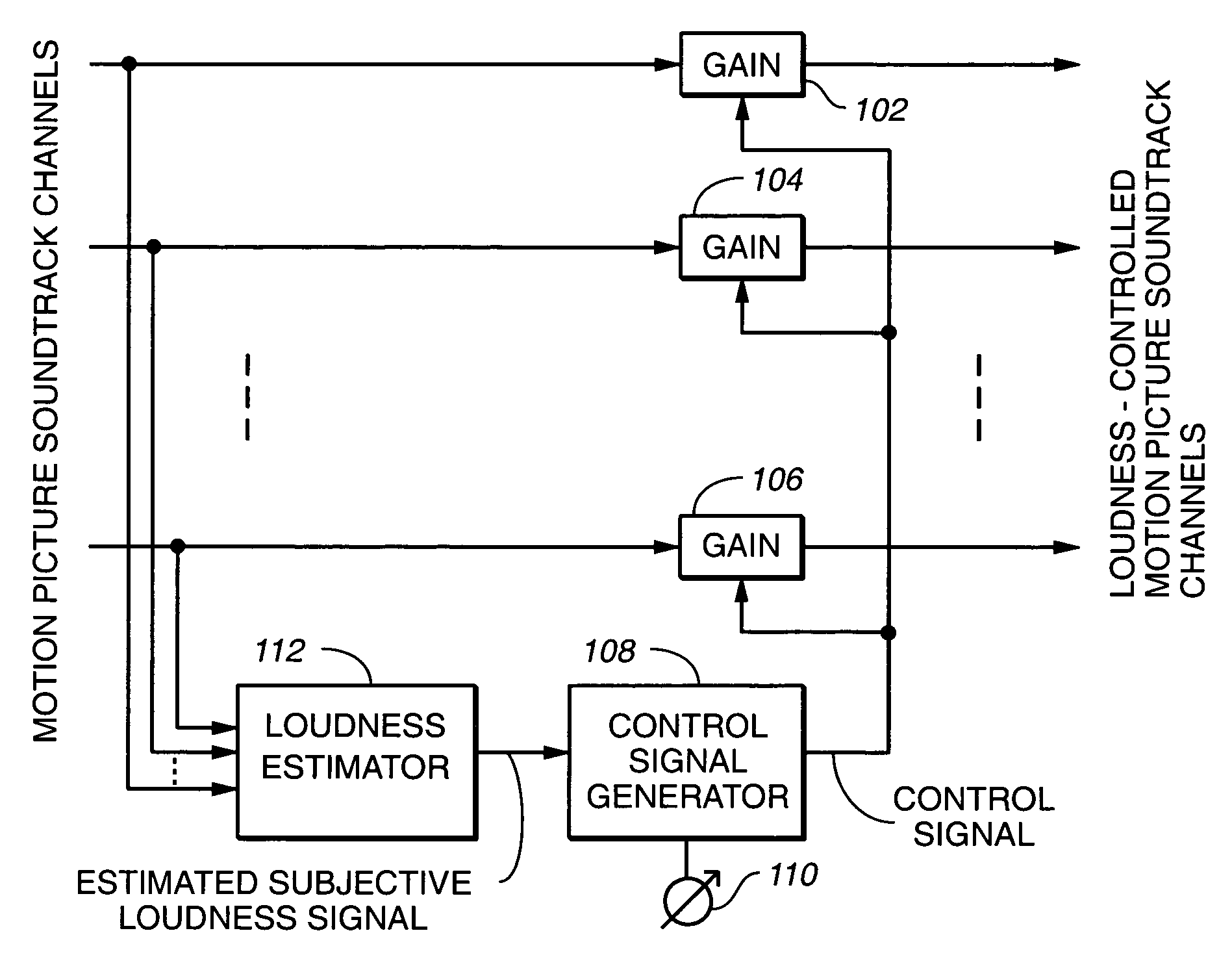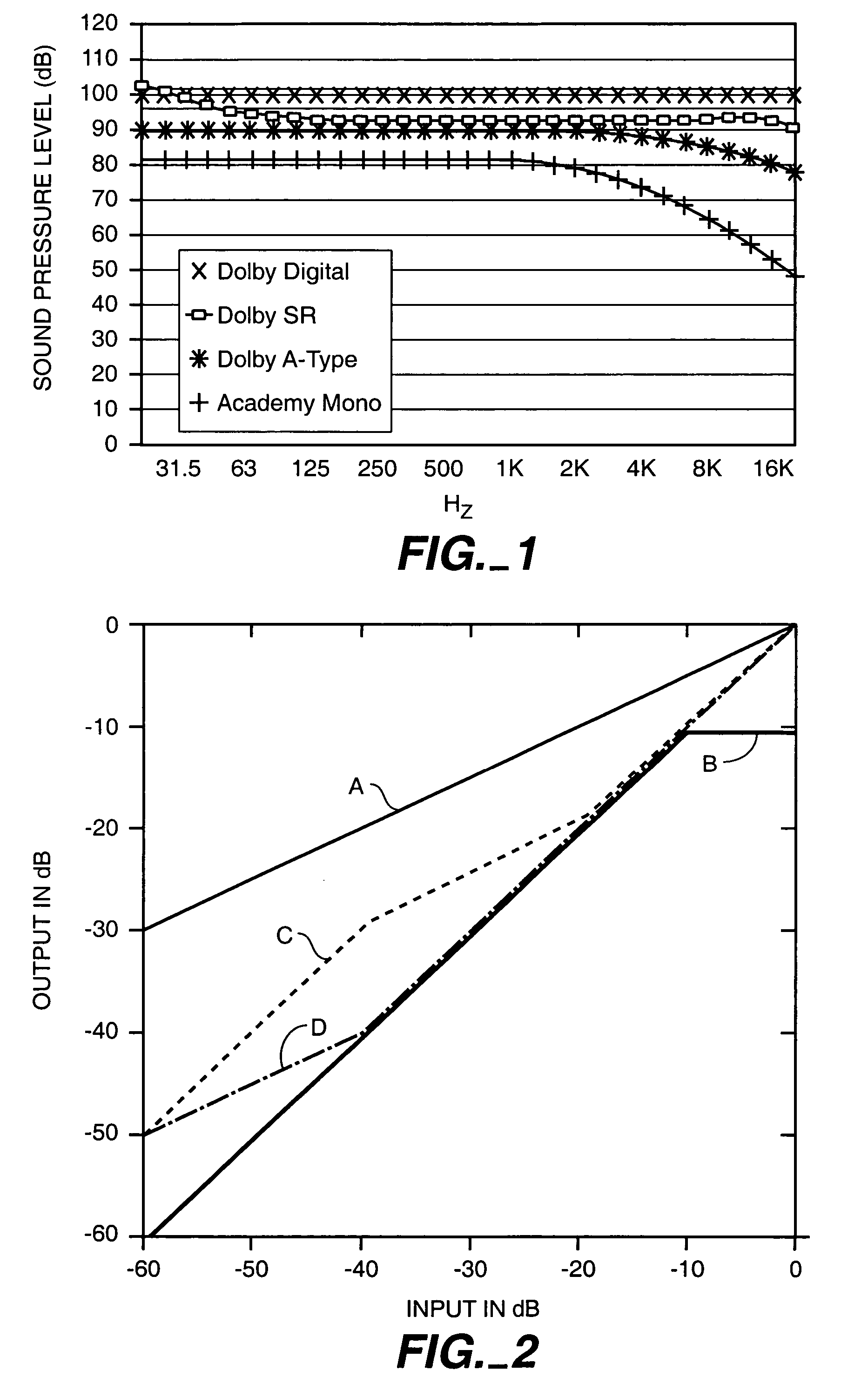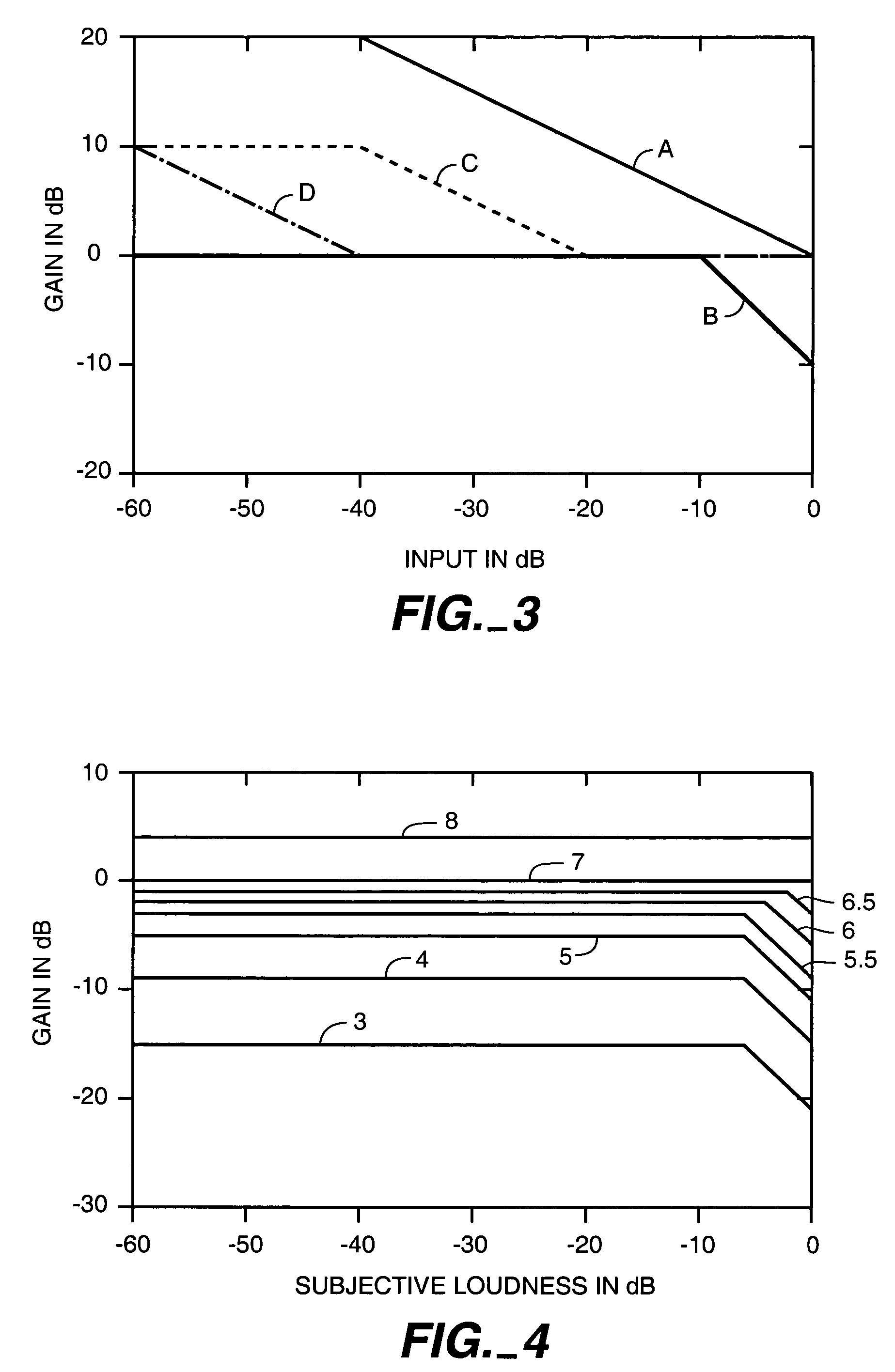Volume and compression control in movie theaters
a movie theater and volume control technology, applied in the field of audio signal processing, can solve the problems of increased headroom from dolby a-type to dolby sr and digital releases, serious dialogue intelligibility problems, and quiet sounds may become inaudible, so as to reduce overall gain and lesser levels of estimated loudness
- Summary
- Abstract
- Description
- Claims
- Application Information
AI Technical Summary
Benefits of technology
Problems solved by technology
Method used
Image
Examples
Embodiment Construction
[0042]The implementation of the present invention may be viewed as involving an audio compressor in which the compressor has a family of input / output response characteristics that are selected by the setting of a single control, conventionally a “volume” control, but in the context of the invention a control that selects not only a volume characteristic, but for some control settings, a compression response for very loud reproduced audio and, optionally, for both very loud and very quiet reproduced audio.
[0043]The design of dynamic range compressors and linear limiters is well established, and details of the dynamic behavior (attack time, recovery time, hold time, program-adapting time-constants, etc.) of a compressor for applications of the present invention are not the subject of this patent. Similarly, compressors may operate on the whole signal or on portions of the audio bandwidth, using band splitting. One skilled in the art will be able to design those aspects of a suitable c...
PUM
 Login to View More
Login to View More Abstract
Description
Claims
Application Information
 Login to View More
Login to View More - R&D
- Intellectual Property
- Life Sciences
- Materials
- Tech Scout
- Unparalleled Data Quality
- Higher Quality Content
- 60% Fewer Hallucinations
Browse by: Latest US Patents, China's latest patents, Technical Efficacy Thesaurus, Application Domain, Technology Topic, Popular Technical Reports.
© 2025 PatSnap. All rights reserved.Legal|Privacy policy|Modern Slavery Act Transparency Statement|Sitemap|About US| Contact US: help@patsnap.com



